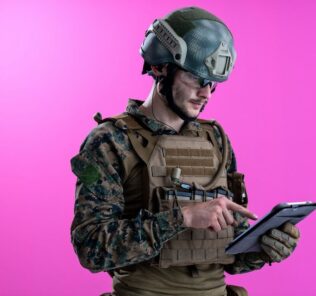Latest “Must Read” Healthcare Simulation Books | July 2022
Healthcare Simulation Books are a critical component of clinical learning as they provide instruction on how to develop, expand, and utilize medical simulation methodologies and technologies. The topics discussed in medical simulation books help professionals and healthcare institutions alike to improve learning and patient safety performance outcomes. Topics often range from audiovisual system design to manikin hardware, debriefing, patient simulators, nursing simulation, virtual reality, research books, surgical simulation, administrative manuals, sim tech guides, and more! This HealthySimulation.com article shares the top four latest clinical simulation books published as of July 2022. Note: HealthySimulation.com receives a commission for any purchases made through the links below.
Defining Excellence in Simulation Programs
Defining Excellence in Simulation Programs (2nd edition) was written to help raise healthcare simulation programs to new heights. An official publication of the Society for Simulation in Healthcare, this fully illustrated guide speaks to the needs of all healthcare professionals using clinical simulation for education, assessment, and research.
Sponsored Content:
The medical simulation book also helps promote best practices for a wide variety of programs and addresses all areas of healthcare simulation program management, from staffing, funding, and equipment, to education models. Those who are new to running a healthcare simulation program, developing a clinical simulation program, or studying medical simulation can utilize this resource as a means to create cost-effective, research-based programs.
To help with the improvement of any healthcare simulation program, this definitive guide, and updated edition offers new content on the International Nursing Association for Clinical Simulation (INACSL) and Association of Standardized Patient Educators (ASPE) standards of practice. The simulation book offers 17 new chapters, with content reorganized to better align with certification exam blueprints, and a fully illustrated, comprehensive framework for all operational aspects of simulation programs as well. Sections address:
- Standards of Practice – SSH, INACSL, and ASPE standards, technology standards, ethics, and more
- Simulation Modalities – History of modern-day mannequins; mannequin terminology, selection, and usage; and standardized patient/participant
- Simulation Methods – In situ, mobile, hybrid, and tabletop simulation; and the continuum of care
Management – Creating the infrastructure for a successful program, business needs and assets management, policies and procedures, and strategic plans - Funding – Sources of revenue, program budgets, business plans, and fee structures
- Environmental Design – Building a simulation center, technical infrastructure, and more
- Educational and Content Development – Educator training and simulation methodology courses, assessing learning needs, shared theories, and more
- Delivery of Simulation – Assessment in healthcare simulation, preparing the learner, management of the scenarios, and more
- Research – Healthcare simulation research, institutional review board, and more
- Resources – Terms of references, examples of studies, case and scenario development templates, and more
Additionally, the book contains an“Expert’s Corner” that offers commentary on essential areas of training, research, and program development by healthcare simulation experts and founders. There is also a “Consider This” section that serves as a practical “how-to” on critical, related topics. “Example and Case Study Boxes” share added examples that support chapter content, and “Terms of Reference” define healthcare simulation terms and concepts.
Clinical Simulation for Healthcare Professionals
Sponsored Content:
Written by Drs. Audrey Zapletal, Joanne Baird, Jean Prast, Maureen Hoppe, Tracy Van Oss, and Adel Herge, Clinical Simulation for Healthcare Professionals provides comprehensive information about commonly used clinical simulation methods including high and low technology simulations, simulated patients, task trainers, and role play. Also included are step-by-step instructions for how to build simulation experiences in a variety of settings and for various learning and teaching needs. How-to information assists instructors who want to develop and integrate simulation-based education into a new or existing curriculum.
As simulated learning experiences are increasingly being used across healthcare education to enhance learner engagement and experience, Clinical Simulation for Healthcare Professionals serves as a resource for the utility, design, and implementation of simulation-based education in occupational therapy, physical therapy, speech-language pathology, and nursing. Using best practice methods, academic and clinical rehabilitation professionals of all levels will learn how to design and implement clinical simulations. These methods can be used as a tool for education, assessment, research, and skills integration.
The example healthcare simulations inside this healthcare simulation book represent an array of different practice and focus uses. Each stage of the simulation is addressed from creation to learning assessment to debriefing. Overall, clinical simulation integrates the worlds of education, health professions, and the performing arts within a singular enriching experience. Clinical Simulation for Healthcare Professionals fulfills a need for educators looking to develop the skills needed to create complex and dynamic learning environments.
Mastering Simulation, Second Edition: A Handbook for Sucess
Simulation can be a valuable tool in academic or clinical settings, but technology changes quickly, and faculty, learners, and clinicians need to know how to respond. Understanding healthcare simulation scenarios and environments are essential when designing and implementing effective programs for interdisciplinary learners. In this fully revised second edition of Mastering Simulation, nationally known experts Janice Palaganas, Beth Ulrich, and Beth Mancini guide students and practitioners in developing clinical competencies and provide a solid foundation for improving patient outcomes. Healthcare simulation book coverage includes:
- Creating simulation scenarios and improving learner performance
- Designing program evaluations and managing risk and quality improvement
- Developing Interprofessional programs and designing research using simulation
Operations Research and Simulation in Healthcare
This healthcare simulation book presents work on healthcare management and engineering using optimization and simulation methods and techniques. Specific topics covered in the contributed chapters include discrete-event simulation, patient admission scheduling, simulation-based emergency department control systems, patient transportation, cost function networks, hospital bed management, and operating theater scheduling. This content is valuable for researchers and postgraduate students in computer science, information technology, industrial engineering, and applied mathematics.
View HealthySimulation.com’s Full List of Healthcare Simulation Books
Lance Baily, BA, EMT-B, is the Founder & CEO of HealthySimulation.com, which he started while serving as the Director of the Nevada System of Higher Education’s Clinical Simulation Center of Las Vegas back in 2010. Lance is also the Founder and acting Advisor to the Board of SimGHOSTS.org, the world’s only non-profit organization dedicated to supporting professionals operating healthcare simulation technologies. His co-edited Book: “Comprehensive Healthcare Simulation: Operations, Technology, and Innovative Practice” is cited as a key source for professional certification in the industry. Lance’s background also includes serving as a Simulation Technology Specialist for the LA Community College District, EMS fire fighting, Hollywood movie production, rescue diving, and global travel. He and his wife Abigail Baily, PhD live in Las Vegas, Nevada with their two amazing daughters.
Sponsored Content:





















